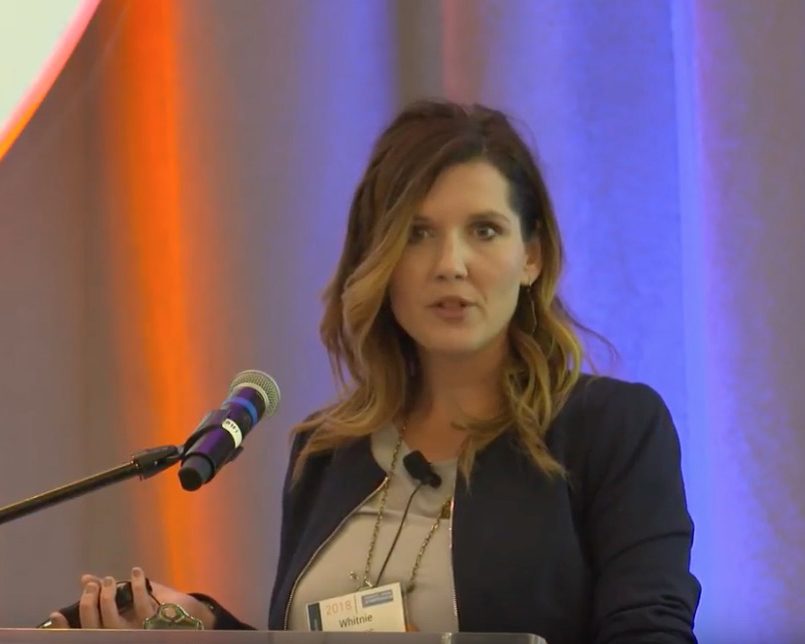
“Three Lessons from the First ACD Patient and Family Symposium” – Laura
On a balmy night in late July we flew into Austin for the first Cerebral Creatine Deficiencies Syndrome (CCDS) Scientific + Patient Symposium. It was the kind of midsummer night when everything is possible and magic is in the air. Except that instead of magic we had science and instead of mythical creatures we had another rare sort of encounter: a hotel packed with researchers, creatine experts, and CCDS families. We had high expectations, were a little nervous, and some of us way too excited for having seen airplanes (aka Ehy-paynes) up close. Little did we know how our expectations would be blown away and how this symposium would become the beacon of hope we’d been searching for in the past year.
For context, myself (Laura) and my partner (Amar) are your garden variety geeks fascinated by science problems and puzzles so much so that we ended up making a living out of it and doing research in a technical field. A bit more than a year ago we were faced with our life’s biggest puzzle: Rohan, our 2.5-year-old son, was diagnosed with Creatine Transporter Defect. Since then we’ve been on a quest, that’s probably familiar to many of you, to find a solution to our creatine woes.
For me, the CCDS Scientific + Patient Symposium was the culmination of a year of reading research on CCDS, reaching out to doctors and research groups, and getting involved with the Board of Directors for the Association for Creatine Deficiencies. A month pre-symposium I joined the board as Director of Research and it’s been an honor and a privilege to join the amazing volunteers that lead our association.
It’s hard to describe the amount of information packed in the two symposium days, the enthusiasm of parents and doctors alike, the power of these remarkable kiddos, the amazing connections and the insightful questions asked. Luckily, the majority of the talks were recorded and our hope is that the videos will provide knowledge as well as a springboard for more discussion. As a preamble to the video series of recorded talks from the symposium I want to share the three main lessons I think emerged as common themes across the two days.
1) Our community is strong together:
It’s hard to raise awareness and get support for rare diseases because so few people are usually impacted. Our blessing is that we have three rare diseases (GAMT, CTD, AGAT) that share the same underlying science. In fact, the way these diseases express in our kiddos is similar. By uniting the three diseases into one community, we have the power to push for more research, to build a stronger support network, and to lobby for our kiddos’ future. As a highlight of what we can achieve together, Kim Tuminello, our Director of Advocacy, gave what was definitely the most moving talk of the symposium describing the process and efforts to include GAMT in the nationwide newborn screening tests (RUSP).
By the numbers, we had 38 families (not counting grandparents and other extended family members that can to show their support and increase their understanding of CCDS) and 56 professionals, including representatives from several pharmaceutical companies.
These attendees flew in from 7 different countries.
2) Knowledge is power:
How many of us have been told there’s nothing that can be done because there’s no treatment for CTD or the effects of GAMT can’t be reversed? As a scientist, what I like to point out is that when medicine doesn’t have a solution, that’s when you look to science for answers. So yes, there is something that can be done: research and science.
In both days we had talks by luminaries in the field (literally the people that discovered these diseases) and this is exactly the kind of knowledge we should strive to deepen in the next years. Beyond the science, the symposium also provided some insight into the different approaches of pharmaceutical companies to come up with a treatment for CTD and the detailed process required to get FDA approval. Watch in the coming weeks for the talk by Dr. Nicola Longo, the head of our Scientific and Medical Advisory Board, that goes in depth into the science of creatine deficiencies and some surprising results for one patient.
3) There’s always something we can do:
My last take-home message is that there’s always something we can do and the symposium only underlined this. We keep hearing about tiger parents or helicopter parents but honestly, these folks have not seen a rare disease parent. Hopefully these videos bring forward ideas about what you can do to educate, advocate for your loved one, or push the boundaries of research. Yes, this is a thinly veiled attempt to recruit volunteers and more importantly a call to arms to say ‘participate in research!’, ‘Ask questions!’, and ‘Challenge the status quo!’. One of my favorite talks at the symposium was about the ACD patient registry and what we parents can do to help move the science forward by uploading genetic data into the Invitae registry.
For an overview of the ACD organization’s mission and their board, check out this first video. We’re all volunteers, we’re all parents, we’re all really determined to make sure creatine deficiencies get diagnosed and treated. How about you? What were your take-home messages or what is it that you’d like to learn more about from the upcoming videos? Please comment below and share your thoughts.





